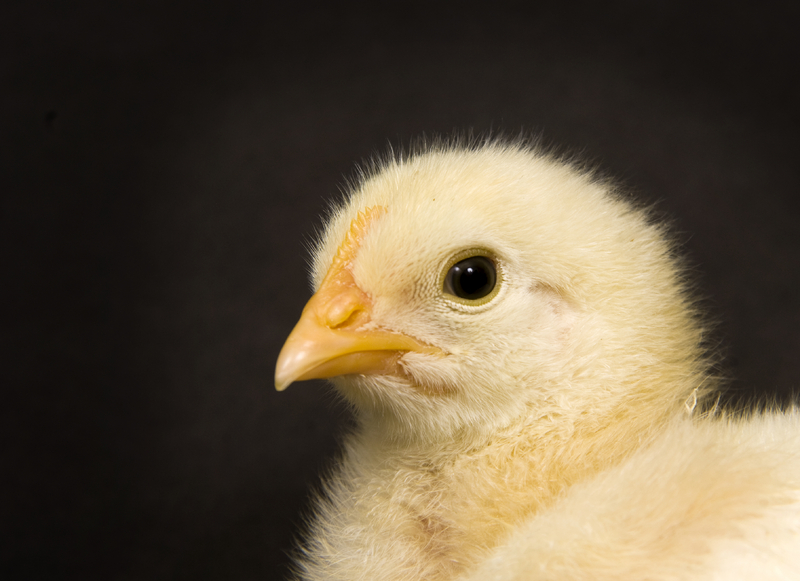Key challenges facing young animals

Across species, young animals require specific and tailored nutritional support as they are introduced to new diets and progress through critical early growth stages. Ole Lund Svendsen, Market Development Manager EMEA at DSM discusses some key challenges facing young animals and ways in which they can be supported with innovative nutritional solutions.
As they go through the weaning process, piglets must quickly adapt from highly digestible and palatable liquid to a less digestible and palatable solid dry diet. Feed intake is usually reduced after weaning and piglets often become malnourished, with a reduced transient growth rate. At weaning age (21-28 days), the gastro-intestinal tract is also underdeveloped. These challenges are particularly problematic, as weight gain in the first week after weaning significantly impacts the total days to market. It is therefore very important to get piglets eating and growing as soon as possible after the weaning stage.
Limited capacity to ferment fibre
In certain regions, there is a high inclusion of barley and oats in weaning diets. Together with arabinoxylans, mixed-linked β(1-3,1-4)-D-glucans (β-glucans) are important cell wall components of the aleurone layer and the endosperm of barley and oats. The presence of the (1-3)-linkages make β-glucan partly soluble and is a major contributor to viscosity in the gastrointestinal tract. However, this relatively high solubility and simple chemical structure also makes β-glucan sensitive to degradation by carbohydrate-fermenting microflora in the stomach and small intestine.
During the first two weeks post-weaning, piglets have a limited capacity to ferment fibre. β-glucans therefore remain undigested and unfermented in the intestine – causing high viscosity. This may reduce passage rate and, in combination with undigested residues, can increase the growth of pathogenic E. coli. To reduce the incidence of post-weaning diarrhoea, the combination of a xylanase and β-glucanase is advised to improve digestibility during this critical period. DSM has therefore developed Ronozyme® MultiGrain, a multi-component enzyme which contains optimal levels of xylanase, 1,4 β-glucanase and 1,3(4) β-glucanase activity for use in piglet diets to help improve their nutritional profile.
Improving immunity
Vitamin D has long been recognised as an indispensable nutrient in animal feed. However, a renewed focus has been placed on the vitamin due to the realisation of its important functions beyond calcium and phosphorous metabolism. These new findings focus on the role of vitamin D’s metabolite, 25-OH-D3, on animal immunity. In animals and animal-derived ingredients, the predominant form of vitamin D is cholecalciferol (D3). Vitamin D is a fat-soluble compound that is absorbed along other lipids in the lymphatic system. The vitamin eventually reaches the liver, where it is converted (hydroxylated) to a storage form, 25-OH-D3. This is the main circulating form of the vitamin. Subsequently, a second hydroxyl is added to this form in the kidney to produce the functional form, 1,25-(OH)2-D3. With its double degree of hydroxylation, this form is even more water-friendly.
Studies with vitamin D source
Commercially available 25-OH-D3 is available in the form of DSM’s Rovimix Hy•D®(hereafter called vitamin D). This vitamin D product is less hydrophobic than conventional vitamin D3 and more easily absorbed from the gut via a different mechanism. It is also one step ahead in the metabolism of vitamin D, therefore bypassing the critical first step of hydroxylation in the liver and reaching the bloodstream more quickly and efficiently. Indeed, experts agree that feeding the vitamin D product is the only way to increase blood levels of 25-OH-D3.
Study in chicks
A 2005 study by Alberta University, Canada, for example, assessed the effects of higher circulating levels of 25-OH-D3 on the immunity of chicks. White blood cells were taken from chicks and incubated in-vitro alongside E. coli cells, to test the ability of the cells to kill the bacteria. The research found that cells derived from chicks from parent stock which had previously been fed 25-OH-D3 had a greater ability to kill the pathogenic bacteria. The results imply that the vitamin D product provides an improved ability for chicks to neutralise a threat of bacterial infection while retaining as high as possible production efficiency.
Study in piglets
Piglets are typically weaned at a stage in their life when their own ability to mount (and regulate) an immune response is far from fully developed. Any compromise to the piglet at this critical stage has been repeatedly shown to negatively impact performance through to slaughter. Research conducted in 2013 has indicated that newly weaned pigs fed diets containing the vitamin D product had significantly higher numbers of immune cells, as well as increased viability and phagocytic activity within those cells. This in-vivo study reinforced the results of the 2005 in-vitro study carried out with chicks. These results also indicate that feeding 25-OH-D3 to newly weaned piglets can improve their performance by enhancing the efficiency of their immune response. This finding is clearly of tremendous value in the management of piglets, particularly during weaning. The transition from suckled to weaned state simultaneously exposes the piglet to high risk of disease while also depriving it of access to the immune protection provided by the sow milk.
Efficient calf nutrition
Separated from cows at a particularly early age, young calves frequently have a quite difficult start to life. The innate immunity effects they derive from colostrum are quickly depleted following separation, which in turn leads to increased susceptibility to invading pathogens. Additionally faced with a new housing environment which is often crowded with calves from other herds, the risks of infection by pathogenic bacteria and development of diarrhoea is significant. Ultimately, these threats can lead to higher mortality rates. In this critical stage of young animal life the addition of probiotics, such as DSM’s Cylactin® (hereafter called probiotic), to the diet can help achieve better gut health and performance. Containing live Enterococcus faecium, this probiotic granules grow quickly and colonise whole gastro-intestinal tract, acting to inhibit the effects of pathogens by protecting the epithelial gut wall.
Reducing digestive upsets
Feeding the probiotic has been shown to reduce incidences of digestive upsets, especially diarrhea from E. coli infections. Recent studies in Turkey, Germany and the Netherlands have shown that the inclusion of this probiotic to calves’ milk replacers can reduce the rate of diarrhoea cases by almost 70%. The additive also supports growth performance by 4-8% and feed conversion by 3-6%. As the change from milk replacer to solid feed provides an additional challenge to the digestive system, it is advised to continue application in calves’ starter feed to maintain the probiotic protection during the development of ruminal function. Indeed, several studies on application in milk replacer and starter feed have shown positive effects.
Conclusion
The specific nutritional requirements of young animals require optimised and scientifically-proven solutions which support improved health and growth in the early stages of life. By harnessing the benefits of innovative feed additives in the diet, producers can increase performance not just in the growth stages, but right across the animal’s entire lifetime.
This article has been supplied by DSM
Join 26,000+ subscribers
Subscribe to our newsletter to stay updated about all the need-to-know content in the feed sector, three times a week. Beheer
Beheer









 WP Admin
WP Admin  Bewerk bericht
Bewerk bericht